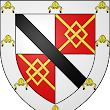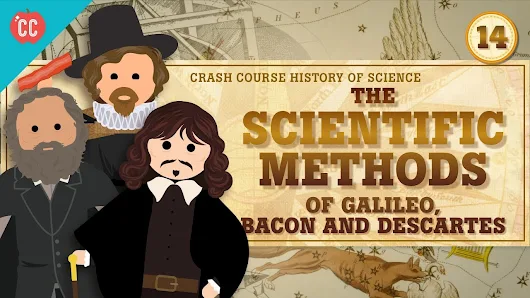Henry le Despenser (c. 1341–1406) was a 14th-century English nobleman and
Bishop of Norwich whose reputation as the
'Fighting Bishop' was gained for his part in
suppressing the Peasants' Revolt in East Anglia and in defeating the peasants at the
Battle of North Walsham in the summer of 1381.
Henry le Despenser was the youngest son of Edward le Despenser (1310–1342), by his wife Anne Ferrers (died 1367), daughter of Sir Ralph Ferrers of Groby.
https://en.wikipedia.org/wiki/Edward_le_Despenser
https://en.wikipedia.org/wiki/Edward_le_Despencer,_1st_Baron_le_Despencer
https://en.wikipedia.org/wiki/Thomas_le_Despenser,_1st_Earl_of_Gloucester
Peasants' Revolt
During the Peasants' Revolt of 1381, rebels from Kent and Essex marched to London and, once admitted to the city, managed to capture the Tower of London. King Richard, who had promised to agree to all the demands of the peasants, met the rebels outside the city, where the leader of the peasants Wat Tyler was killed and the rebellion was ended. The king's promises were retracted.
The rebellion quickly spread to other parts of England, including the diocese of Norwich, where it lasted for less than a fortnight. On 14 June a group of rebels reached Thetford and from there the insurrection spread over south-western Norfolk towards the Fens. At the same time the rebels, led by a local dyer, Geoffrey Litster, moved across the north-eastern part of the county, urging insurrection throughout the local area. Over the next few days, the rebels converged on Norwich, Lynn and Swaffham. Norwich, then one of the largest and most important cities in the realm, was taken and occupied by Litster and his followers, who caused considerable damage to the property and possessions of their enemies once they managed to enter the city. The Norwich rebels then travelled to Yarmouth, destroying legal records and landowners' possessions; other insurgents moving across north-east Norfolk destroyed court rolls and taxation documents; there were numerous incidents of pillage and extortion across the whole county.
Despenser first heard news of the rising in his own diocese at a time when he was absent at his manor of Burley in Rutland, 100 miles (160 km) west of Norwich. Armed, he hastened back to Norfolk via Peterborough, Cambridge and Newmarket, with a company of only eight lances and a small body of bowmen. His followers increased on the way, and by the time he reached North Walsham, near the Norfolk coast, he had a considerable force under his command. There he found the rebels entrenched and defended by makeshift fortifications. According to Thomas Walsingham, in the Battle of North Walsham the bishop himself led the assault and overpowered his enemies in hand-to-hand fighting. Many were slain or captured, including the rebels' leader, who was hanged, drawn and quartered soon afterwards. Despenser personally superintended Litster's execution. In the following months he proceeded to deal with other rebels in his diocese. But the rigour with which he put down the rebellion made him highly unpopular in Norfolk and in the following year a plot was organised to murder him. The scheme was betrayed in time by one of the conspirators, and the plotters were dealt with by the authorities.
https://en.wikipedia.org/wiki/Peasants%27_Revolt
https://en.wikipedia.org/wiki/Battle_of_North_Walsham
As a young man he studied at Oxford University and held numerous positions in the English Church. He fought in Italy before being consecrated as a bishop in 1370. Parliament agreed to allow Despenser to lead a crusade to Flanders in 1383, which was directed against Louis II of Flanders, a supporter of the antipope Clement VII. The crusade was in defence of English economic and political interests. Although well funded, the expedition was poorly equipped and lacked proper military leadership. After initial successes, a disastrous attempt to besiege the city of Ypres forced Despenser to return to England. Upon his return he was impeached in parliament. His temporalities were confiscated by Richard II of England, but were returned in 1385, the year he accompanied the king northward to repel a potential French invasion of Scotland.
https://en.wikipedia.org/wiki/Despenser%27s_Crusade
https://en.wikipedia.org/wiki/Pope_Urban_V
Despenser was an energetic and able administrator who staunchly defended his diocese against Lollardy. In 1399, he was among those who stood by Richard, following the landing of Henry Bolingbroke in Yorkshire towards the end of June. He was arrested for refusing to come to terms with Bolingbroke. The following year, he was implicated in the Epiphany Rising, but was pardoned.
https://en.wikipedia.org/wiki/Henry_IV_of_England
https://en.wikipedia.org/wiki/Epiphany_Rising
https://en.wikipedia.org/wiki/Lollardy
Soon after returning from Flanders, the bishop was impeached in parliament, on 26 October 1383, in the presence of the king. The chancellor Michael de la Pole accused him of not mustering his troops at Calais, as had been agreed; not recruiting a high enough number of armed men; refusing to certify properly who his military leaders were; deceiving the king by not allowing a secular lord to command the expedition to Flanders; and disbanding his forces prematurely. Despenser denied all the charges, insisting that enough men had assembled at Ypres, that he had chosen his commanders well and that he had not refused to obey the king's orders. After de la Pole declared the bishop's replies to be insufficient, Despenser requested another hearing to defend himself still further, which was granted. In this hearing Despencer proceeded to blame his own commanders for forcing him to retreat from Ypres and then evacuate the garrisons. All his arguments were refuted and he was blamed for the failure of the expedition. His temporalities were confiscated and he was ordered to repay any costs taken from money gained from the French.
Despenser's fall from grace did not last long. Following Scottish incursions into England, it was decided that the 18-year-old King Richard should lead an army into Scotland, marking the start of his military career. In 1385 every magnate of consequence, including Despenser, joined the immense host that advanced north with the king,
https://en.wikipedia.org/wiki/Michael_de_la_Pole,_1st_Earl_of_Suffolk
The le Despenser family originated from the lords of Gomiécourt in north-eastern France. Henry's grandmother Eleanor de Clare was a granddaughter of Edward I of England.
Henry's great-grandfather Hugh le Despenser, 1st Earl of Winchester (1262–1326) and grandfather Hugh Despenser the Younger (1286–1326), who was a favourite of Edward II, were both exiled and later executed after the rebellion of Queen Isabella and her lover Mortimer against Edward II of England. Hugh le Despenser had become Edward II's adviser, holding power until the king's defeat at the Battle of Bannockburn, but he was later restored to favour. His son was appointed the king's chamberlain and enjoyed a still larger share of royal favour. The barons were hostile to the Despensers, due to their acquired wealth and perceived arrogance, and in 1321 they were banished. Their sentences were soon afterwards annulled and from 1322 they played an important role in the governing of the country, but in 1326 Isabella acted against them and both men were tried and executed.
In 1375, Despenser's nephew Thomas le Despenser, 1st Earl of Gloucester succeeded his father Edward. Thomas was captured and killed following the attempt to restore Richard II in the Epiphany Rising.
https://en.wikipedia.org/wiki/Epiphany_Rising
Henry was born around 1342, the year that his father was killed at the siege of Vannes. He and his three brothers all grew up to become soldiers. His eldest brother Edward le Despencer, 1st Baron le Despencer (around 1335–1375) was reputed to be one of the greatest knights of his age: he and Henry fought together for Pope Urban V in his war against Milan in 1369. Comparatively little is known of his other siblings: Hugh le Despenser fought abroad and died in Padua in March 1374, Thomas fought in France and died unmarried in 1381 and Gilbert le Despenser died in 1382. Their sister Joan was a nun at Shaftesbury Abbey until her death in 1384.
https://en.wikipedia.org/wiki/Henry_le_Despenser
https://en.wikipedia.org/wiki/Bishop_of_Norwich
https://en.wikipedia.org/wiki/Diocese_of_Norwich
https://en.wikipedia.org/wiki/Battle_of_North_Walsham
https://en.wikipedia.org/wiki/Archbishop_of_Canterbury










